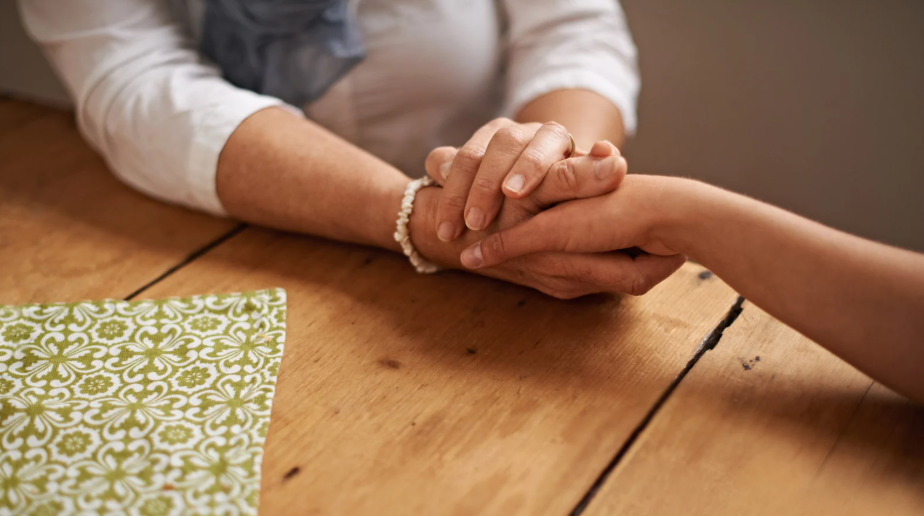Understanding the Emotional Landscape of Cancer
1.1. The Shock of Diagnosis
Receiving a cancer diagnosis is an event that can trigger a flood of emotions: disbelief, fear, anger, and even guilt. Patients often find themselves stuck in a haze of “What next?” For caregivers—spouses, adult children, friends—the shock can feel equally jarring, as they try to come to terms with the reality that someone they love is facing a serious health threat. During these initial phases, the importance of a solid emotional foundation cannot be overstated.
- Acknowledging Feelings: It’s normal to experience denial or numbness. Patients and caregivers should allow space for these emotions without judgment.
- Seeking Immediate Support: A quick phone call to a supportive friend or a calm discussion with a healthcare professional can help stabilize nerves.
1.2. The Emotional Rollercoaster Throughout Treatment
Cancer care is typically not a straightforward, linear process. From surgery to chemotherapy or radiation to immunotherapy, patients may experience periods of progress and stagnation. Each stage often comes with its own side effects—fatigue, nausea, emotional distress—that affect not just the patient but also those providing care.
- Emotional Fluctuations: It’s natural for patients to feel discouraged on rough days and relieved on better days. These swings can be intense, and caregivers may also ride this rollercoaster.
- Mental Health Support: Counseling, therapy, and support groups are invaluable for navigating these ups and downs. Many oncology centers host regular support group sessions. Online communities, which include forums and social platforms, can also connect you with individuals experiencing similar challenges.
1.3. Mindfulness and Resilience
Practicing mindfulness can mitigate stress and reduce anxiety. Techniques such as guided imagery, deep breathing, and gentle yoga promote relaxation and give the mind a break from worry.
- Daily Routines: Even five minutes of mindful breathing can help center a patient or caregiver before a busy day of medical appointments.
- Mental Resilience: Over time, adopting mindful habits can foster resilience, helping individuals bounce back from setbacks more readily.
2. Physical Well-being and Symptom Management
2.1. Nutritional Support
Good nutrition is an invaluable ally in the fight against cancer. Treatments like chemotherapy or radiation can sap energy, diminish appetite, and upset the gastrointestinal system. Working with a dietitian or nutritionist who specializes in oncology can create a plan that optimizes nutrient intake and tackles side effects such as nausea or mouth sores.
- Essential Foods: Lean proteins (like fish, chicken, legumes), whole grains, and antioxidant-rich fruits and vegetables can improve overall health.
- Hydration: Adequate fluid intake is critical—herbal teas, water, and broths can be soothing to a sensitive stomach.
- Nutritional Supplements: High-calorie meal replacement drinks or protein powders, such as those found at SquashCancer.com, can be a convenient way to sneak in extra nutrients when regular food becomes less appealing.
2.2. Pain and Side Effect Management
Cancer pain can be caused by the disease itself or by treatments. Managing it effectively is crucial for maintaining quality of life.
- Medication: Prescription pain relievers, nerve blockers, and non-opioid alternatives can be part of a pain management plan. Always consult healthcare professionals for the right medication and dosage.
- Integrative Therapies: Acupuncture, physical therapy, and massage can complement medical treatments.
- Comfort Measures: Heat packs, cold compresses, and gentle stretching exercises can provide localized relief.
2.3. Rest and Recuperation
Cancer treatments often leave patients feeling drained. Investing in quality rest can speed up recovery and reduce stress.
- Sleep Hygiene: Maintaining a bedtime routine—limiting screen time, setting a cool room temperature—helps improve sleep quality.
- Short Naps: A 15- to 30-minute daytime nap can provide an energy boost without disrupting nighttime sleep patterns.
- Supportive Products: Specialized pillows, cushions, or bedding designed for individuals with limited mobility can enhance comfort.
3. Practical Considerations and Daily Living
3.1. Treatment Logistics and Scheduling
Chemotherapy sessions, radiation appointments, and routine tests can easily overwhelm even the most organized person.
- Calendars and Apps: Many digital tools and mobile apps help you track appointments, schedule medication reminders, and manage to-do lists.
- Travel Logistics: Consider the commute time to treatment centers. SquashCancer.com offers supportive products—like ergonomic seat cushions—that can make longer car or bus rides more comfortable.
- Home Health Aids: Handrails in bathrooms, nonslip mats, and adjustable beds can significantly reduce risks and improve comfort.
3.2. Financial Planning
Cancer care can introduce significant financial challenges. Medical bills, prescription costs, and time off work can drain resources quickly.
- Insurance and Benefits: Understanding your health insurance plan’s coverage and speaking with a social worker or financial counselor can illuminate cost-saving measures.
- Assistance Programs: Many nonprofit organizations offer financial aid for medical expenses, travel costs, and even utility bills.
- Long-Term Planning: For extended treatments, setting up a budget or financial plan ensures that resources are allocated wisely.
3.3. Communication with Employers
Patients and caregivers often need flexibility at work. Open communication with HR departments or managers about scheduling accommodations can reduce stress and prevent misunderstandings about performance or attendance.
- Remote Work Opportunities: If the job allows, working from home (even part-time) can provide the necessary flexibility for treatment or caregiving duties.
- Legal Protections: Familiarize yourself with local labor laws; in many places, there are protections for employees dealing with serious illnesses.
4. Supporting the Caregiver
4.1. The Caregiver’s Emotional Toll
Caregivers frequently put their own needs last, focusing all their energy on the patient. This self-sacrifice can lead to burnout, anxiety, and even depression. Recognizing that caregiving, though rewarding, is also incredibly demanding is the first step in preventing emotional exhaustion.
- Permission to Feel: Caregivers should acknowledge their own frustrations, fears, and sadness. Suppressing these feelings can lead to severe stress and reduced capacity to care effectively.
- Support Groups: Caregiver-specific support groups—whether online or in person—offer a safe space to share challenges.
4.2. Physical Health for Caregivers
Lifting, transferring, and supporting a patient can be physically strenuous. Over time, the constant vigilance takes a toll on one’s health.
- Proper Body Mechanics: Learning the right way to lift or move a patient can prevent caregiver injuries.
- Exercise: Even moderate activity—like a brisk walk—several times a week can keep caregivers healthier and more energetic.
- Healthy Nutrition: Caregivers often skip meals or rely on quick but less nutritious foods. Simple strategies, such as preparing meals in batches, can help maintain a balanced diet.
4.3. Utilizing Respite Care
Respite care services offer temporary, professional help for patients, giving caregivers a much-needed break. This can be especially beneficial for those providing 24/7 support.
- In-Home Services: Hiring a nurse or professional caregiver can provide short-term relief.
- Community Programs: Some hospitals and community centers partner to offer daytime care services.
- Emotional Replenishment: A break often revitalizes the caregiver, making them more effective upon return.
5. The Power of Community and Connection
5.1. Local Support Networks
Many communities feature resources specifically tailored for people impacted by cancer. Churches, nonprofits, and community centers might host monthly group sessions, classes on nutrition, and even exercise programs adapted for cancer patients.
- Face-to-Face Interaction: Engaging in local support networks can create bonds that extend beyond the cancer experience.
- Resource Sharing: These communities often share leads on reputable products, educational programs, and local services.
5.2. Online Communities and Social Media
For those who cannot easily attend in-person meetings—or who value the flexibility of digital access—online platforms provide an excellent avenue for connecting.
- Virtual Support Groups: Facebook groups, dedicated forums, and specialized apps allow patients and caregivers to ask questions, share experiences, and stay updated on the latest treatments.
- Anonymity and Accessibility: Online communities often allow for more open expression, particularly for individuals who feel uncomfortable discussing certain topics in person.
5.3. Storytelling and Personal Narratives
Narratives—whether in blog posts, podcasts, or social media updates—carry a profound power to uplift and educate. When someone shares a personal story of triumph or struggle, it can validate the emotions of others walking a similar path.
- Finding Inspiration: Browsing through real patient stories on SquashCancer.com can offer hope and concrete tips for coping.
- Empowering Others: Everyone’s cancer journey is unique; sharing your experiences can help others feel less alone.
6. Holistic and Integrative Therapies
6.1. The Rising Popularity of Integrative Oncology
Integrative therapies have gained significant traction as complements to conventional treatments like chemotherapy or surgery. While these therapies do not replace medical interventions, they often improve the overall quality of life, helping with pain, anxiety, and stress.
- Acupuncture: Some studies show it may reduce chemotherapy-induced nausea and peripheral neuropathy.
- Herbal Supplements: Natural remedies must be discussed with doctors to avoid negative interactions with prescribed medication.
- Aromatherapy: Essential oils—such as lavender or peppermint—can ease stress and nausea when used appropriately.
6.2. Exercise and Movement
Gentle forms of exercise—like walking, swimming, or yoga—can benefit both physical health and emotional well-being. Always consult a medical professional to tailor a safe exercise plan based on your condition.
- Reduced Fatigue: Moderate exercise can actually combat fatigue by improving circulation and muscle strength.
- Improved Mood: Exercise releases endorphins, the body’s natural “feel-good” chemicals, which can be particularly helpful during treatment.
6.3. Music and Art Therapy
Engaging in creative activities can provide emotional relief and a sense of accomplishment.
- Expression Over Talent: It’s not about how good you are at drawing or singing; it’s about releasing emotions and finding joy in the creative process.
- Guided Sessions: Professionals trained in music or art therapy can design sessions that cater to your specific emotional or cognitive needs.
7. Navigating Body Image and Self-Esteem
7.1. Hair Loss and Skincare
Chemotherapy-induced hair loss or radiation burns can deeply affect a patient’s self-esteem. Investing time and resources in managing these changes can make a significant difference in emotional resilience.
- Head Coverings: Hats, scarves, and wigs—some of which can be found at SquashCancer.com—offer stylish and comfortable options for dealing with hair loss.
- Gentle Skincare: Fragrance-free and hypoallergenic products can soothe radiation-induced skin irritation.
7.2. Weight Changes
Some cancer treatments lead to significant weight loss or gain. Each change can be distressing, especially if it feels beyond one’s control.
- Healthful Adjustments: Working with a registered dietitian can guide patients on how to manage these weight fluctuations safely.
- Clothing Choices: Adaptive clothing—designed with soft fabrics and minimal seams—can provide comfort for skin that’s sensitive or easily irritated.
7.3. Emotional Perception of Self
Beyond the physical changes, patients may grapple with a sense of lost identity. It’s vital to recognize that self-worth and beauty are multifaceted.
- Self-Compassion: Practicing kindness toward oneself—in language and thought—can soothe the distress caused by appearance changes.
- Community Validation: Listening to others who have experienced similar changes often provides comfort and reassurance.
8. Developing a Survivorship Plan
8.1. Transition from Active Treatment to Ongoing Care
Completing active treatment is a major milestone that sometimes comes with unexpected emotional turbulence. Anxiety about recurrence, adjusting to life post-treatment, and redefining one’s sense of purpose can all converge.
- Follow-Up Appointments: Regular check-ups help monitor any signs of recurrence and manage long-term side effects.
- Lifestyle Adaptations: Incorporating balanced nutrition, moderate exercise, and stress management techniques is essential.
8.2. Emotional Landscape After Treatment
Feelings of loneliness or confusion can arise when the intense, structured routine of treatment suddenly stops. Patients might experience a sense of vulnerability or a fear of the unknown.
- Ongoing Counseling: Speaking with mental health professionals can help in processing the entirety of the cancer experience.
- Support Communities: Cancer survivorship programs, both in-person and online, give you a chance to connect with others navigating a similar “new normal.”
8.3. The Role of Gratitude and Purpose
Many survivors discover a renewed sense of purpose—be it advocacy, volunteering, or simply living more intentionally.
- Journaling: Keeping a daily or weekly gratitude journal can help anchor you in positive reflections.
- Advocacy and Outreach: Survivors often find fulfillment by joining awareness campaigns, fundraisers, or educational programs.
9. Inspiring Hope and Future Directions in Cancer Care
9.1. Advancements in Research
Groundbreaking treatments such as targeted therapies, CAR T-cell therapy, and more sophisticated immunotherapies are reshaping how we tackle cancer.
- Clinical Trials: These can offer early access to cutting-edge treatments. Always consult your oncologist to weigh the potential benefits and risks.
- Precision Medicine: Genetic testing helps identify personalized treatments, tailoring therapies to a patient’s unique genetic profile.
9.2. The Importance of Awareness Campaigns
Public support and awareness are crucial for continued research funding and improved healthcare policies.
- Community Involvement: Fun runs, awareness months, and fundraising events are not just about money—these gatherings spread vital information and solidarity.
- Educating the Public: Early detection can save lives. Raising awareness about screening tests—mammograms, colonoscopies, and pap smears—empowers people to catch cancer in earlier, more treatable stages.
9.3. Global Collaboration
Researchers, healthcare professionals, and patient advocacy groups across the globe are working together, sharing data, and innovating.
- International Studies: Large-scale collaborative studies often accelerate the discovery of more effective and less toxic treatments.
- Telemedicine: Virtual consultations broaden access to specialist care, particularly for those in remote areas.
10. Products and Resources to Enhance the Cancer Journey
SquashCancer.com offers a range of products and resources specifically curated to ease the cancer journey for both patients and caregivers. While no single product can eliminate the hardships of cancer, many tools and items can significantly improve comfort, organization, and emotional well-being.
10.1. Comfort and Self-Care Essentials
- Adaptive Clothing: Soft, breathable materials that minimize irritation and are easy to put on and remove—especially important for individuals experiencing restricted mobility or undergoing treatments that involve IVs or ports.
- Soothing Accessories: Blankets, pillows, and neck wraps designed to address the aches, chills, or discomfort that often accompany chemotherapy or radiation sessions.
10.2. Nutritional Aids
- Meal Replacement Products: High-protein shakes, vitamin-rich smoothies, and snack bars can be lifesavers when appetite is low or nutritional demands are high.
- Herbal Teas and Comfort Beverages: Formulated to ease nausea or promote relaxation.
10.3. Organizational Tools
- Planner Kits: Featuring appointment calendars, medication logs, and symptom trackers, these tools help patients and caregivers stay on top of complex treatment regimens.
- Portable Health File Organizers: Lightweight folders or binders that keep all your medical documents, lab results, and insurance details in one place.
10.4. Emotional Wellness Resources
- Guided Journals: Provide prompts to help individuals process daily thoughts, emotions, and anxieties.
- Audio and Video Programs: Guided meditations, inspirational talks, or relaxation routines that can be easily streamed or downloaded.
10.5. Caregiver Support Packages
- Rest and Relaxation Kits: Containing soothing lotions, essential oil rollers for stress relief, and quick healthy snacks designed for caregivers on the move.
- Educational Materials: Caregiver handbooks and tip sheets that detail best practices for safe patient handling, emergency protocols, and self-care.
11. Building a Legacy of Hope
11.1. Encouraging Compassion and Empathy
One profound lesson that often emerges from the cancer journey is empathy. The vulnerability associated with illness can bring about new perspectives on compassion—for yourself and others.
- Listening First: Whether you are a patient or caregiver, taking the time to truly hear each other’s fears and aspirations can mend emotional gaps.
- Shared Responsibility: Families and friends who rally around both patient and caregiver create a nurturing community that can significantly reduce stress.
11.2. Passing on Knowledge
Every person’s cancer experience is unique, but each also offers insights that can ease the path for those who follow.
- Blogging and Social Media: By sharing updates about your journey, you can demystify certain aspects of treatment and recovery, helping new patients feel more prepared.
- Mentoring: Some cancer centers offer peer-mentorship programs. A patient in remission might guide a newly diagnosed individual through the labyrinth of early treatment.
11.3. Celebrating Milestones
In the midst of heavy emotions, celebrating small and big victories—such as completing a cycle of chemotherapy, reaching a stable scan result, or simply having a better day than yesterday—can restore hope.
- Memorializing Achievements: Mark each milestone by journaling or collecting mementos as a tangible reminder of strength and perseverance.
- Future-Focused: Even when faced with uncertainty, creating future plans or goals—big or small—can anchor patients and caregivers in hope.
12. Conclusion: Hope, Resilience, and the Road Ahead
Facing cancer—whether personally or as a caregiver—is a test of resilience. From the whirlwind of diagnosis and treatment to the hurdles of emotional and financial planning, it’s normal to feel overwhelmed. Yet, within these struggles lie moments of extraordinary strength, unity, and compassion. The journey can tear down walls between loved ones and bring out the best in communities that rally around those in need.
Practically speaking, there is no one-size-fits-all approach to cancer care. Each diagnosis is unique, influenced by a person’s biology, emotions, support system, and spiritual beliefs. But certain universal strategies can lighten the load:
- Lean on Knowledge: Understanding your diagnosis, treatment options, and symptom management strategies fosters a sense of control.
- Seek Support: From local hospital groups to online communities, you are never alone unless you choose to be.
- Care for the Caregivers: Their well-being is integral to the patient’s stability.
- Stay Hopeful and Open-Minded: Medical innovations continue to evolve, expanding treatment possibilities and improving outcomes.
At SquashCancer.com, we are committed to guiding you through this challenging landscape, offering products and resources that address comfort, organization, nutrition, and emotional well-being. While we believe in the power of advanced medical treatments and holistic care, we also see the value in simpler, everyday items that can make a significant difference. A well-chosen head scarf, a supportive pillow, or a guided journal might seem small, but when combined, these practical tools help lay the foundation for a more comfortable, more hopeful experience.
Ultimately, the cancer journey is about so much more than surviving—it’s about finding ways to thrive. It’s about discovering pockets of joy in the midst of hardship and forging meaningful connections that bring renewed faith in humanity. Whether you are stepping into a hospital for the first time or nearing the completion of active treatment, remember that every step you take—no matter how small—matters. It’s the collective power of these seemingly modest actions that will move you forward, day by day, toward a future shaped by resilience, hope, and healing.









